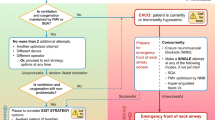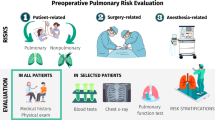Abstract
Background: Recent case reports have alerted the medical community of fatality in children receiving codeine after tonsillectomy and/or adenoidectomy for obstructive sleep apnea syndrome.
Objective: The objective of this study was to compare the rates of oxygen desaturation before and after adenotonsillectomy in children with obstructive sleep apnea syndrome (OSAS), and to examine the relationship between cytochrome P450 2D6 (CYP2D6) genotype and respiratory events.
Study Design: This was a prospective observational study.
Methods: Twenty-six children with OSAS (mean age 78 months, range 1.8–17 years) who underwent adenotonsillectomy were studied. CYP2D6 genotype was characterized in 21 of these children. The primary endpoints of the study were the change in the rate of desaturation and in the nadir oxygen saturation values before and in the first 24 hours after surgery as measured by pulse oximetry.
Results: Twenty-two children received codeine and four were managed with hydrocodone. There was no post-operative improvement in the mean rate of desaturation (1.84±1.45/hour pre-operative vs 2.97±3.3/hour post-operative; p = 0.119; 95% CI −2.56, 0.313), or the post-operative nadir of oxygen saturation (85.2±5.8% pre-operative vs 84.0±6.8% post-operative; p = 0.632; 95% CI −3.00, 4.84) on the night after surgery. Prior to surgery, six children had an oxygen saturation nadir <80%, while post-surgery, the number increased to eight children. Ten children improved their parameters after surgery. CYP2D6 genotype by itself did not predict the changes in desaturation or nadir.
Conclusion: Post-operative use of opioids following OSAS may not be safe for all children. It is conceivable that if the child is among the significant proportion that experiences increased oxygen desaturations, the CNS depressing effects of codeine or hydrocodone and their respectively potent morphine or hydromorphone metabolites can further compromise respiratory drive. Larger studies are needed to investigate the potential contribution of CYP2D6 genotype.



Similar content being viewed by others
References
Schlaud M, Urschitz MS, Urschitz-Duprat PM, et al. The German study on sleep-disordered breathing in primary school children: epidemiological approach, representativeness of study sample, and preliminary screening results. Paediatr Perinat Epidemiol 2004; 18 (6): 431–40
Chang SJ, Chae KY. Obstructive sleep apnea syndrome in children: epidemiology, pathophysiology, diagnosis and sequelae. Korean J Pediatr 2010; 53 (10): 863–71
Shine NP, Coates HL, Lannigan FJ. Obstructive sleep apnea, morbid obesity, and adenotonsillar surgery: a review of the literature. Int J Pediatr Otorhinolaryngol 2005; 69 (11): 1475–82
Warwick JP, Mason DG. Obstructive sleep apnoea syndrome in children. Anaesthesia 1998; 53 (6): 571–9
Brown KA. What we don’t know about childhood obstructive sleep apnoea. Paediatr Anaesth 2001; 11: 385–9
Friedman M, Wilson M, Lin HC, et al. Updated systematic review of tonsillectomy and adenoidectomy for treatment of pediatric obstructive sleep apnea/hypopnea syndrome. Otolaryngol Head Neck Surg 2009; 140 (6): 800–8
Brietzke SE, Gallagher D. The effectiveness of tonsillectomy and adenoidectomy in the treatment of pediatric obstructive sleep apnea/hypopnea syndrome: a meta-analysis. Otolaryngol Head Neck Surg 2006; 134 (6): 979–84
Ye J, Liu H, Zhang G, et al. Postoperative respiratory complications of ad-enotonsillectomy for obstructive sleep apnea syndrome in older children: prevalence, risk factors, and impact on clinical outcome. J Otolaryngol Head Neck Surg 2009; 38 (1): 49–58
Williams DG, Patel A, Howard RF. Pharmacogenetics of codeine metabolism in an urban population of children and its implications for analgesic reliability. Br J Anaesth 2002; 89 (6): 839–45
Lloyd-Thomas AR. Pain management in paediatric patients. Br J Anaesth 1990; 64: 85–104
Harley EH, Dattolo RA. Ibuprofen for tonsillectomy pain in children: efficacy and complications. Otolaryngol Head Neck Surg 1998; 119 (5): 492–6
Ciszkowski C, Madadi P, Phillips MS, et al. Codeine, ultrarapid-metabolism genotype, and postoperative death. N Engl J Med 2009 20; 361 (8): 827–8
Kelly LE, Rieder MJ, van den Anker J, et al. Codeine fatalities after tonsil-lectomy in North American children. Pediatrics 2012; 129 (5): e1343–7
Sistonen J, Fuselli S, Levo A, et al. CYP2D6 genotyping by a multiplex primer extension reaction. Clin Chem 2005; 51 (7): 1291–5
Gaedigk A, Simon SD, Pearce RE, et al. The CYP2D6 activity score: translating genotype information into a qualitative measure of phenotype. Clin Pharmacol Ther 2008; 83 (2): 234–42
Ye J, Liu H, Zhang GH, et al. Outcome of adenotonsillectomy for obstructive sleep apnea syndrome in children. Ann Otol Rhinol Laryngol 2010; 119 (8): 506–13
Brown KA, Morin I, Hickey C, et al. Urgent adenotonsillectomy: an analysis of risk factors associated with postoperative respiratory morbidity. Anesthesiology 2003; 99 (3): 586–95
Wilson K, Lakheeram I, Morielli A, et al. Can assessment for obstructive sleep apnea help predict postadenotonsillectomy respiratory complications? Anesthesiology 2002; 96 (2): 313–22
Powell S, Kubba H, O’Brien C, et al. Paediatric obstructive sleep apnoea. BMJ 2010; 340: c1918
American Thoracic Society. Cardiorespiratory sleep studies in children: establishment of normative data and polysomnographic predictors of morbidity. Am J Respir Crit Care Med 1999; 160 (4): 1381–7
Isono S, Shimada A, Utsugi M, et al. Comparison of static mechanical properties of the passive pharynx between normal children and children with sleep-disordered breathing. Am J Respir Crit Care Med 1998; 157 (4 Pt 1): 1204–12
Nixon GM, Kermack AS, Davis GM, et al. Planning adenotonsillectomy in children with obstructive sleep apnea: the role of overnight oximetry. Pediatrics 2004; 113: e19–25
McColley SA, April MM, Carroll JL, et al. Respiratory compromise after adenotonsillectomy in children with obstructive sleep apnea. Arch Otolaryngol Head Neck Surg 1992; 118 (9): 940–3
Mitchell RB, Kelly J. Outcome of adenotonsillectomy for obstructive sleep apnea in children under 3 years. Otolaryngol Head Neck Surg 2005; 132 (5): 681–4
Guilleminault C, Li K, Quo S, et al. A prospective study on the surgical outcomes of children with sleep-disordered breathing. Sleep 2004 1; 27 (1): 95–100
Rosen GM, Muckle RP, Mahowald MW, et al. Postoperative respiratory compromise in children with obstructive sleep apnea syndrome: can it be anticipated? Pediatrics 1994; 93 (5): 784–8
Madadi P, Koren G. Pharmacogenetic insights into codeine analgesia: implications to pediatric codeine use. Pharmacogenomics 2008; 9 (9): 1267–84
Sistonen J, Sajantila A, Lao O, et al. CYP2D6 worldwide genetic variation shows high frequency of altered activity variants and no continental structure. Pharmacogenet Genomics 2007; 17 (2): 93–101
Acknowledgments
GK, DDS, JDK, and DR designed the study and came up with the concept; JDK, DDS, and DR collected data; PM, JS, CJDR, BCC, MRH, GK planned and/or conducted genetic analysis; all authors were involved in data interpretation and/or analysis; JDK, GK and PM drafted the manuscript; DDS, PM, and GK conducted the literature search; and all authors contributed to the final draft of this report.
This study was supported, in part, by grants from the Canadian Institutes for Health Research-Drug Safety and Effectiveness Network (CIHR-DSEN), and the Canadian Pharmacogenomics Network for Drug Safety. Oxygen saturation monitors were provided by Covidien-Nellcor, Boulder, CO, USA. The funding sources of the study had no role in study design, data collection, data analysis, data interpretation, or writing of the report.
The authors have no conflicts of interest that are directly relevant to the content of this review.
Author information
Authors and Affiliations
Corresponding author
Rights and permissions
About this article
Cite this article
Khetani, J.D., Madadi, P., Sommer, D.D. et al. Apnea and Oxygen Desaturations in Children Treated with Opioids after Adenotonsillectomy for Obstructive Sleep Apnea Syndrome. Pediatr Drugs 14, 411–415 (2012). https://doi.org/10.1007/BF03262421
Published:
Issue Date:
DOI: https://doi.org/10.1007/BF03262421




